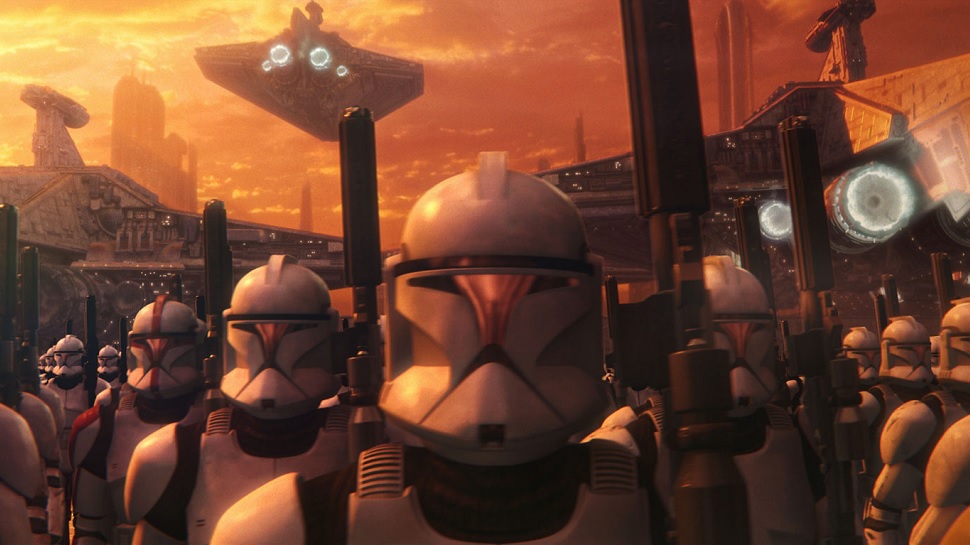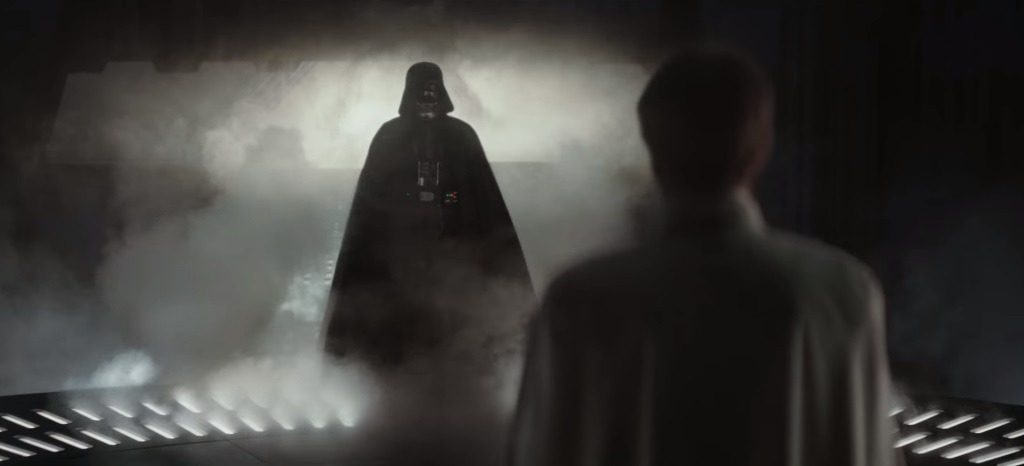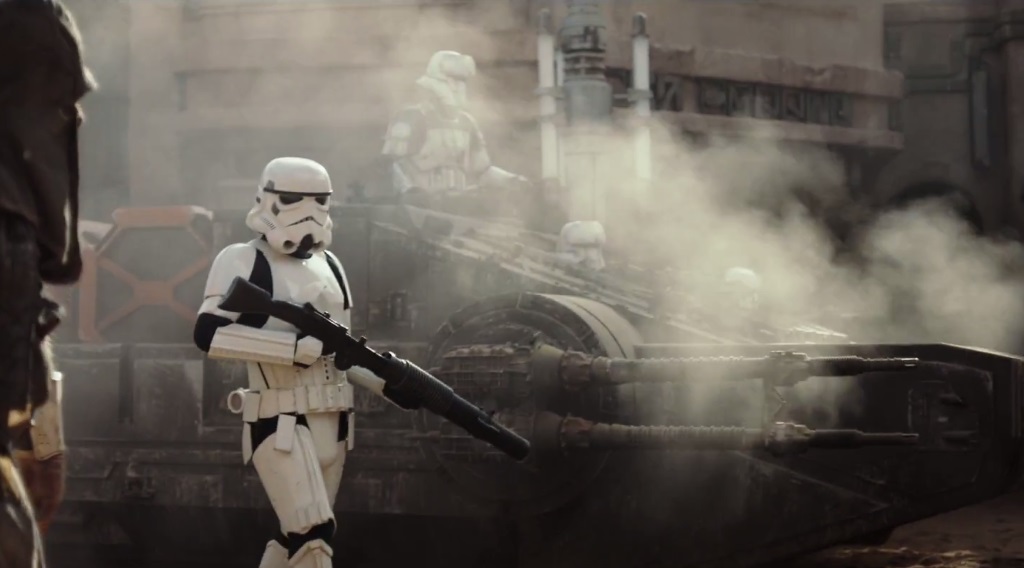New Blood
What an exciting time! Michael Giacchino, one of my favorite composers, gets to score a new Star Wars film. Somebody correct me if I am wrong, but this marks the first time someone other than John Williams scores a live action, feature-length Star Wars film. And given that the Star Wars saga will likely outlive (all of us, including) John Williams, it is great to hear other composers take a shot at scoring a Star Wars film.
Ever since Rogue One was announced, I had been wondering who would score it. Michael Giacchino was my first guess, but I was happy to hear that Alexandre Desplat had been announced given a. the high quality of his work and b. the fact that he had already scored some of the Harry Potter films (which is also a pre-existing saga previously scored by John Williams). When it was announced that Mr. Desplat would not be able to score it due to other commitments, it was no surprise to me that the chosen one for the job would be Michael Giacchino, for the exact same reasons as his predecessor.Did Mr. Giacchino live up to John Williams by delivering an outstanding Star Wars score? Let me first expand a little bit on what it means to score a Star Wars film if you are not John Williams…
First of all, like I said in the previous paragraph, Michael Giacchino had to prove that he can fill John Williams’ shoes. Limiting his creative freedom in favor of a fitting score for the saga, Giacchino had to sound like Williams in such a way that you wouldn’t notice Williams’ absence. Just like you see Peter Cushing’s face digitally recreated so perfectly that you believe he never died (and stayed the same age forever), Michael Giacchino’s score needed to sound just as if it had been composed by John Williams for a Star Wars film. In other words, the audience needed to be unable to notice that “there was something off with the soundtrack.”
The big challenge Giacchino faced by scoring Rogue One was sounding enough like Star Wars that you wouldn’t notice the film was not scored by John Williams, while being original enough that his work is justified as an enhancing addition to the Star Wars saga. I believe he succeeded at this tremendously well, and I am going to explain below how he did it…
A Star Wars Story
It is undeniable that while Rogue One fits the overall Star Wars storyline, it introduces enough characters and story elements that make it stand as its own story. Even in its title, the film is trying to support this concept: It’s not “Star Wars Episode 3.5: Rogue One;” it is “Rogue One: A Star Wars Story.”
As far as the soundtrack goes, even if every previous Star Wars film incorporated new themes, it would not have a need for presenting a new Imperial March depicting a specific time for the Empire: Ever since The Imperial March (which is also known as Darth Vader’s theme, and I’ll explain the importance of this seemingly trivial detail in a second) was introduced, every time that the Empire appeared, we would hear that theme.

That may still be true for the main saga, but it’s not the case for Rogue One. It would have been very easy for Edwards and Giacchino to overuse the Imperial March in this film, but instead, Giacchino composed a new cue for the Empire.
It sounds like the Imperial March, does it? It doesn’t sound like it is copying the Imperial March, but it sounds like it belongs in the Empire. The reason it sounds so much like the Empire is that it uses the same chord progression: Im-bVIm (a.k.a., the first degree in a minor scale plus the sixth degree with a minor third instead of the major third that belongs to the chord and scale). Here are the two themes side by side, both transposed to the same key (F minor) for your listening convenience.
Rogue One’s Imperial Theme
The Imperial March
Additionally, do you remember the motif that accompanied the shots of the Death Star in A New Hope? I can’t find it anywhere, so I’ll play it for reference (and from memory), also in the same key:

Once again: the same Im-bVIm progression. If any composer were in Giacchino’s position and had to compose an original theme for the Empire, he or she would likely compose the theme using that harmony. Sure, the progression is frequently used to denote evil (and if anyone knows and would like to comment where that use for this cadence started, please do so), but Williams could have chosen any other progression for this. Given that he used this one, it makes sense that Giacchino would choose the same.
But here’s what’s even more interesting: every time Darth Vader appears, Giacchino does not miss the chance to quote the Imperial Theme. He will not score a Vader appearance with his own music, but rather with Williams’. What does this mean? The way I read it is that Giacchino wants you to associate the Imperial March with Darth Vader (the story we already know) so that you can understand Rogue One (the new story) as Giacchino’s. Giacchino could have used his own Imperial theme, which he had already introduced, but he doesn’t want to. He wants to prove a point: that one is Darth Vader’s story, this one’s Krennic’s. That score is John Williams’; this one is mine.

All you, Johnny. I’ll write music for the new characters.
The same thing happens when the rebels appear. You see, this is not the Rebel Alliance’s story. It’s not the Rebels, but a gone rogue. Heck, the title of the movie is Rogue One. Do you ever hear the Rebel fanfare…
This one:

…when our team of rogues goes into battle? No. Not even once. But that’s not the case for the times when the Rebel Alliance calls in the cavalry (their X-Wing squadron), because if the Rebel X-Wings come to the battle, you can bet you’ll hear it.
Pages from Williams’ book
The list goes on and on. Giacchino does a good job of matching Williams’ style (and in particular, his style in A New Hope) in a lot of ways. Remember for example, how Williams would use accented eighth notes in a way that was heavily inspired (to say the least) in Stravinsky’s Rite of Spring? Here it is, in case you didn’t remember:
Well, so does Giacchino in Rogue One, during a scene in which Galen Erso is visited by the Empire in a scene that seems, just like Lucas’ films, heavily inspired in Samurai films.
Crescendi with Timpani that end in a brass chord and a cymbal roll, harp glissandi, brass accompanying melodies repeated notes in eighth-note triplets, the Star Wars sound is everywhere.
Pages from Giacchino’s book
As noticeable as John Williams’ influence is Giacchino’s ability to back off when needed. There is a scene that seems taken out of a war film, in which our heroes scramble against the Empire in the streets of Jedha.

Tight shots of tanks and soldiers, giving us the feeling of a close-quarters battle, a girl crying in the middle of the street, and a soundtrack limited to the very dramatic diegetic sound, only to resume the score when Jyn (Felicity Jones) and Kassian (Diego Luna) escape the scene. Also present is the (very effective) meditative silence or light texture that follows the end of action scenes. Once again, even with Williams’ influence, Giacchino and Edwards manage to give the Star Wars saga some fresh ideas.
Your thoughts
What did you think about Giacchino’s score? Does it stand on its own? Does it sound like it belongs in the Star Wars saga? Let me know in the comments below! As far as new posts go, I’ll see you on February 5th for my article on The BFG.




